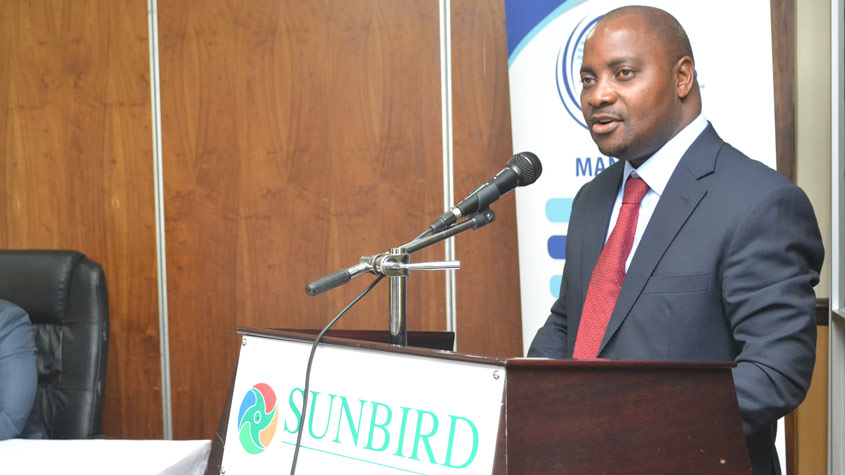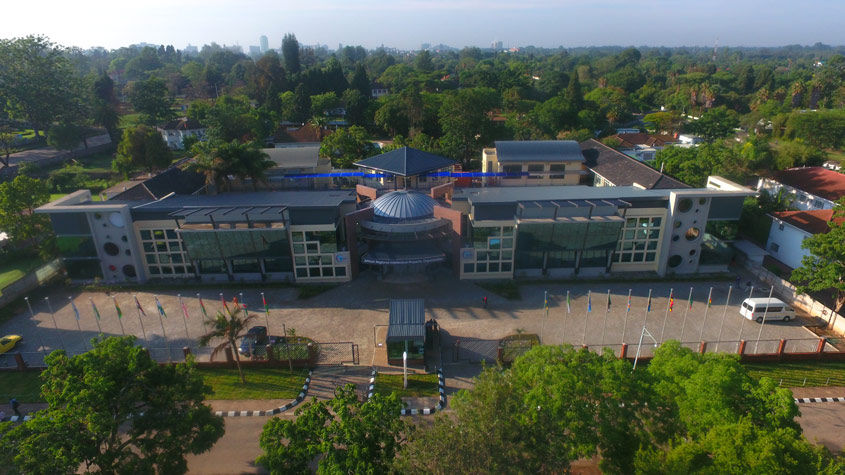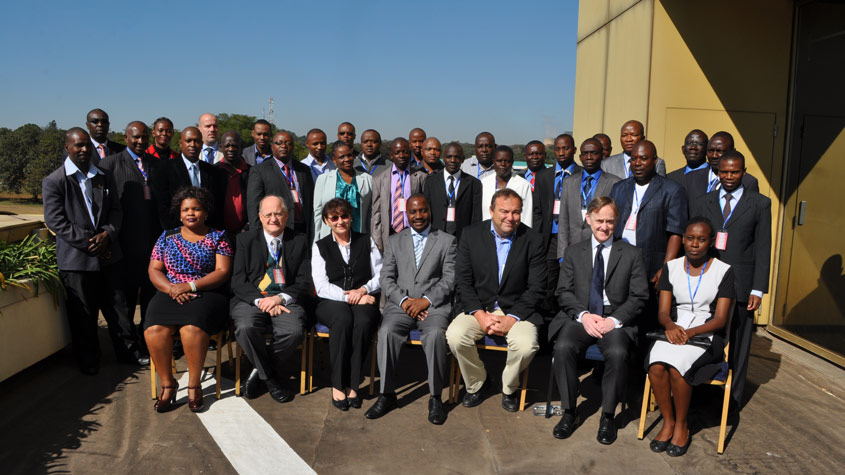
ARIPO: promoting innovation in Africa
By Fernando dos Santos, Director General, African Regional Intellectual Property Organization, (ARIPO), Harare, Zimbabwe
For the last four decades, the African Regional Intellectual Property Organization (ARIPO), established with the conclusion of the Lusaka Agreement in 1976, has been working to strengthen Africa's intellectual property (IP) system. The Lusaka Agreement effectively called on all ARIPO member states to pool their resources to develop an effective IP system that would support the region’s economic, social, scientific, technological and industrial development. ARIPO plays a central role in this process by facilitating cooperation among its 19 member states.

Protocols administered by ARIPO
- The Harare Protocol for the protection of Patents, Industrial Designs and Utility Models (1982);
- The Banjul Protocol on Marks (1993);
- The Swakopmund Protocol for the Protection of Traditional Knowledge and Folklore (2010); and
- The Arusha Protocol for the Protection of New Varieties of Plants (2015).
The Organization administers four protocols covering patents, utility models, industrial designs, marks, new varieties of plants, traditional knowledge and folklore. ARIPO also has a mandate to coordinate initiatives regarding copyright and geographical indications. ARIPO’s member countries span an area of 7 million square kilometers, have a combined population of 230 million people and a GDP of USD 368 billion.
Member States of ARIPO
- Botswana
- Gambia
- Ghana
- Kenya
- Lesotho
- Liberia
- Malawi
- Mozambique
- Namibia
- Rwanda
- Sao Tomé and Príncipe
- Sierra Leone,
- Somalia
- Sudan
- Swaziland
- Tanzania
- Uganda
- Zambia
- Zimbabwe
Key among the objectives outlined in the Lusaka Agreement is ARIPO’s role in assisting “its members, as appropriate, in the acquisition and development of technology relating to intellectual property matters” (see Article III (h)). The founding fathers of the organization recognized that although innovation and creativity thrive across the continent, low uptake and use of the IP system meant that Africans were not fully leveraging the potential value of their ingenuity.
More than four decades later, the numbers of applications for IP rights filed with ARIPO remains low. From 1984 – when the Harare Protocol for the protection of patents and industrial designs took effect – up to October 2019, ARIPO received 11,896 patent applications. Just 2.5 percent of those applications originated from ARIPO member states, with 8.5 percent from the rest of Africa. Eighty-nine percent of the patent applications received by ARIPO in that period originated from countries outside of Africa. A similar pattern exists with respect to industrial designs. In the same period, ARIPO received 1,421 industrial design applications. ARIPO member states accounted for 19.4 percent of those applications, 18.3 percent came from other African countries and 62.3 percent came from applicants from the rest of the world. With respect to trademark applications, since 1997 – when the Banjul Protocol became operational – up to October 2019, applicants filed 3,961 trademark applications with ARIPO; 31.8 percent of them came from ARIPO member states, 7.7 percent from other African countries and the remaining 60.5 percent were filed by applicants outside the continent. Applications for utility models are the only exception to this trend. In the period from 1984 to October 2019, of the 169 applications for utility models received, 78.7 percent were filed by applicants from ARIPO member states; 7.1 percent of applications came from other African countries, and the remaining 14.2 percent from applicants beyond Africa.
The low uptake of IP rights by African innovators and the disproportionate number of IP applications filed by non-ARIPO residents, suggests that the regional system is not yet fully aligned with national development policies. It also suggests that there is still some way to go in terms of raising awareness among users of the IP system about the potential social and economic advantages that can flow from the strategic use of IP rights.
Initiatives to improve the uptake of the IP system in Africa
Recognizing the need to build broader recognition of the role that IP can play in Africa’s development and to address the gap in IP skills, in 2006, ARIPO established its IP Academy. As the focal point for training at ARIPO, the Academy is responsible, on the one hand, for developing and delivering training programs to enhance general understanding of IP, and, on the other hand, to offer more specialized programs for IP professionals. Between 1992 and 2016, ARIPO organized 112 training programs for more than 5,000 participants from the public and private sectors.

Between 2014 and 2017, ARIPO also began rolling out its roving seminars program to build understanding of the benefits of IP among the business community and academia in its member states. In that period, roving seminars took place in 15 ARIPO countries and attracted over 2,000 participants. An additional 800 plus participants benefitted from seminars tailored to the specific interests of academic and research institutions. With its partners, ARIPO has also developed a number of academic programs. Such programs are crucial to the emergence of a critical mass of African IP professionals that can help catalyze the development of national innovation ecosystems, support IP awareness among key generators of IP and enable African countries to harness their creative and innovative resources in support of sustainable national economic development.
With this goal in mind, in 2008, ARIPO launched – with its partners, WIPO and the Africa University in Mutare, Zimbabwe – its flagship Masters in Intellectual Property (MIP) program. So far, the program has produced 324 graduates from 26 African countries. Buoyed by the program’s success, ARIPO has gone on to launch similar programs in Ghana and Tanzania in 2018 and 2019, respectively.
ARIPO has also been working with WIPO to encourage universities and research institutions in the region to focus on innovation and the strategic use of IP. To this end, in collaboration with WIPO, we have established a series of practical guidelines, which we are encouraging universities and research institutions in the region to use in crafting their own institutional IP policies and strategies. Some universities are already implementing such policies.

In terms of professional development in the area of IP, ARIPO has launched two practical initiatives that promise to further strengthen the region’s IP system. The first is the Regional Patent Examiner Training (ARPET) program developed in partnership with IP Australia, which aims to improve the competency of patent examiners from ARIPO and its member states in conducting search and examination bringing it into line with international standards. The second initiative is a patent drafting course that seeks to enhance patent drafting skills in African countries and to increase patenting levels across the region. Launched in 2009, so far, the program has taught patent drafting skills to 250 individuals from 19 countries.
In another important step that promises to further boost innovation in the region, ARIPO and WIPO recently agreed to leverage existing national Technology and Innovation Support Centers (TISCs) in ARIPO member states. So far, TISCs are operating in 10 ARIPO member states, with Uganda, Kenya and Mozambique hosting the highest numbers of TISCs on the continent. Under the agreed new ARIPO-WIPO cooperation agreement, these TISCs will form an integrated regional network with ARIPO as its hub, enabling optimal use of resources and invaluable exchanges of information and experiences.
Finally, ARIPO is working to improve public recognition of the critical contributions that creators and innovators make to our lives – thereby promoting greater uptake and use of IP across the continent – through various awards and prizes. The Organization serves on jury panels to identify outstanding inventions and confers prizes for best inventors at exhibitions of inventions organized by the patent offices in various member states. ARIPO also continues to promote innovation within the region through its active participation in trade and innovation fairs.
The aforementioned initiatives are already translating into greater general awareness of how use of the IP system can foster innovation, business growth and economic development in the region. We have come a long way in creating the conditions to enable greater uptake and use of the IP system in the region, but we still have some way to go until this translates into higher numbers of IP applications filed by residents of ARIPO member states.
The WIPO Magazine is intended to help broaden public understanding of intellectual property and of WIPO’s work, and is not an official document of WIPO. The designations employed and the presentation of material throughout this publication do not imply the expression of any opinion whatsoever on the part of WIPO concerning the legal status of any country, territory or area or of its authorities, or concerning the delimitation of its frontiers or boundaries. This publication is not intended to reflect the views of the Member States or the WIPO Secretariat. The mention of specific companies or products of manufacturers does not imply that they are endorsed or recommended by WIPO in preference to others of a similar nature that are not mentioned.